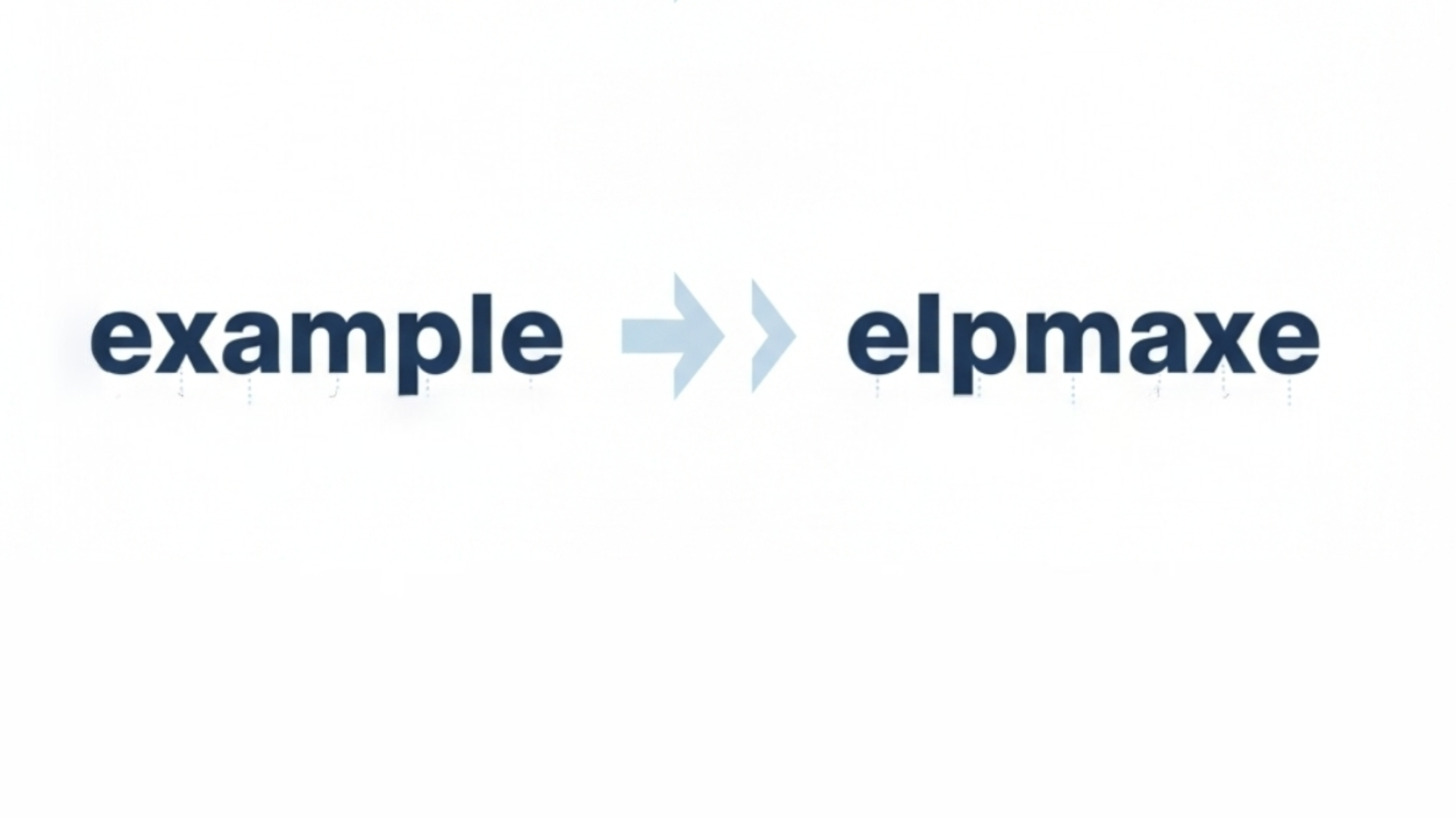
Reverse Letters
Created on 16 October, 2025 • Text Tools • 19 views • 2 minutes read
Reversing letters — turning "example" into "elpmaxe" — is a small but surprisingly useful text operation. Developers, linguists, and content creators use letter reversal for tasks ranging from simple utilities and puzzles to data
Reverse Letters: A Practical Guide to Reversing Text Correctly
Reversing letters — turning "example" into "elpmaxe" — is a small but surprisingly useful text operation. Developers, linguists, and content creators use letter reversal for tasks ranging from simple utilities and puzzles to data transformation and obfuscation. This guide explains how reversing letters works, common methods, edge cases (especially with Unicode), and real-world use cases.
What Is Letter Reversal?
Letter reversal is the process of reordering the characters in a string so they appear in the opposite sequence. At the simplest level, it means taking an array of characters and flipping the order: the first character becomes last, the second becomes second-last, and so on. While conceptually trivial, correct reversal must account for multi-byte characters, combining marks, and language direction to avoid producing broken or unreadable text.
How Letter Reversal Works (Algorithms and Complexity)
The most common approach to reverse letters is in-place swapping. Using two pointers (one at the start, one at the end), you swap characters and move the pointers toward the center. This algorithm runs in O(n) time and O(1) extra space for languages where characters map to single code units.
Simple Algorithm (Pseudo)
left = 0; right = len(s) - 1; while left < right: swap(s[left], s[right]); left++; right--;
For many scripting languages, a common idiom is to convert the string to a list or array, call a built-in reverse, then rejoin the pieces. This is easy and practical but may allocate extra memory: O(n) time and O(n) space.
Important Edge Cases: Unicode, Graphemes, and Directionality
Not all “characters” are single bytes. Unicode introduces combining marks, emoji sequences, and grapheme clusters (what users perceive as a single character). Naively reversing Unicode code points can split an emoji + skin-tone modifier or break accented characters.
Handling Grapheme Clusters
To reverse letters correctly in many languages, use libraries that work with grapheme clusters (for example, ICU, Python’s `regex` with `\X`, or specialized JavaScript libraries). These tools treat combined sequences as single units so that reversing preserves visual and semantic integrity.
Right-to-Left Languages
For languages like Arabic or Hebrew, text has directionality. Reversing raw characters without considering bidirectional layout can produce confusing output. When reversing for display or transformation, handle Unicode BiDi rules or reverse logical sequences rather than visual runs.
Practical Uses and Applications
Letter reversal finds use in several contexts:
- Educational tools: teaching algorithms and data structures.
- Puzzles and games: building wordplay features (e.g., palindromes).
- Data transformation: reversing identifiers or log lines for pattern matching.
- Obfuscation: simple masking of data (note: not secure encryption).
- Testing: generating edge-case inputs for parsers or UI rendering.
Best Practices and Tips
When implementing a reverse-letters feature, follow these best practices:
- Prefer Unicode-aware libraries to preserve grapheme clusters and diacritics.
- Decide whether you need visual or logical reversal (important for BiDi text).
- Document behavior for mixed-content strings (emoji, combined marks, zero-width joiners).
- Avoid using reversal as a security or privacy technique — it’s trivially reversible.
Conclusion
Reversing letters is an easy-to-understand operation with hidden complexity when real-world text is involved. For simple ASCII strings, in-place swapping or built-in reverse functions are sufficient. For internationalized content, use Unicode-aware solutions that respect grapheme clusters and text direction. When done correctly, letter reversal becomes a robust utility useful in development, content creation, and testing.
Popular posts
-
Reverse Ip LookupChecker Tools • 37 views
-
BMP To WEBPImage Manipulation Tools • 30 views
-
IP LookupChecker Tools • 28 views
-
BMP To ICOImage Manipulation Tools • 26 views
-
SSL LookupChecker Tools • 25 views